 The first thing you notice when you travel from southern Cameroon to the Far North is that suddenly, everyone seems a little bit taller and a whole lot thinner. The people of the Far North remind me of the Masai – long, impossibly lean, and elegant beyond description, with cheekbones that could cut glass.
The first thing you notice when you travel from southern Cameroon to the Far North is that suddenly, everyone seems a little bit taller and a whole lot thinner. The people of the Far North remind me of the Masai – long, impossibly lean, and elegant beyond description, with cheekbones that could cut glass.
The second thing you notice is color – the total lack of it in this parched dun landscape aching for water at the end of the dry season, and the raucous surfeit of it in the robes, scarves and head coverings of the women. Even in the withering heat, they look amazing.
But the day I visited Mordok village outside Maroua, instead of blazing sun, we had cool, rainy weather. We were traveling with Heifer‘s aptly titled Animator, Robert Ndouwountang, a local organizer who speaks both French and the tribal language of Guiziga, and he is a force of nature all by himself. Robert has been responsible for training, implementing, overseeing and motivating Heifer’s project in Mordok since 2007, as part of Heifer‘s large umbrella project that will benefit 1,270 farm families of 10,160 people here in Cameroon’s Far North.
The Mordok group -actually 2 groups – is 100% women and the project’s goal is food security for the village. In this region with 38% malnutrition in children, and about 9 children per household (2-3 of them usually adopted from other families or relatives), that’s no small undertaking.
Yet with the gift of sheep and a few simple tools & trainings, life here has become markedly better.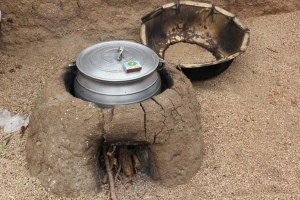
Take the energy stove. Each woman built one using local clay in about 30 minutes (with the animator’s guidance), and now the firewood laboriously collected in the bush & hauled home lasts five days, instead of 1 ½. To prove that to her daughter, one woman did a side-by-side test and found the energy stove used 70% less firewood and cooks faster. (Plus, the women can cook outside during the 9-month dry season, shielding the whole family from dangerous indoor smoke.)
In the project, Mordok women were also given 18 handcarts, which makes carrying 20 liter bottles of water from the borehole a lot faster and easier (and gives girls time to go to school).
 The sheep the women received from Heifer have not just added protein and income to families’ lives, their manure is collected to produce compost that has doubled the production of their fields. And by using retaining walls and terracing, as Robert has encouraged them to do, farmers are protecting the region’s soil from erosion and degradation and conserving precious water.
The sheep the women received from Heifer have not just added protein and income to families’ lives, their manure is collected to produce compost that has doubled the production of their fields. And by using retaining walls and terracing, as Robert has encouraged them to do, farmers are protecting the region’s soil from erosion and degradation and conserving precious water.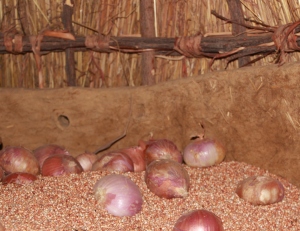
Women’s groups in several villages have even banded together to build water-tight storage facilities for their grains and onions, so they will last through the wet season, instead of counting on traditional handmade straw structures to keep out the rain and moisture. The impact of that improvement? An 80 kilo bag of onions that sells for 5000 francs ($10) at harvest time will bring in 120,000 ($240) at the end of the wet season. And these joint efforts are a direct result of the leadership and organizational trainings the women are putting into action.
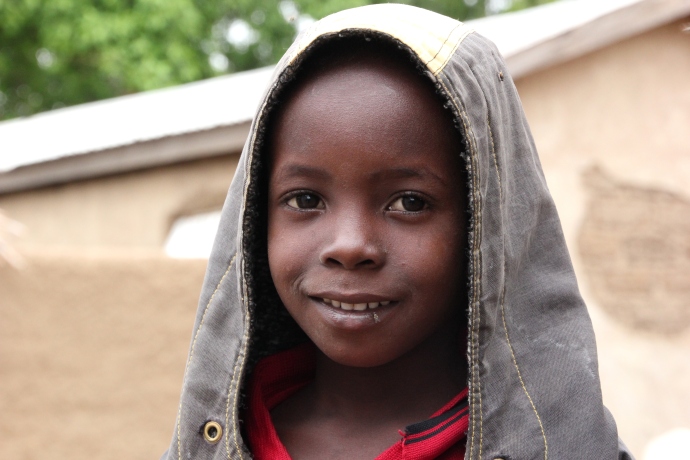 And yet, life is still very difficult here. The children are too skinny, and some of the women looked so fragile. When I asked what the family eats in a typical day, the women say they have pap, or bui, (cooked grains) for breakfast. For lunch, it’s sauce and cous-cous, the ubiquitous fu-fu of cassava, yams or plantains, boiled and pounded into dough. And more cous-cous and sauce for dinner. Once a month, the family will have meat. And once a week, fruit.
And yet, life is still very difficult here. The children are too skinny, and some of the women looked so fragile. When I asked what the family eats in a typical day, the women say they have pap, or bui, (cooked grains) for breakfast. For lunch, it’s sauce and cous-cous, the ubiquitous fu-fu of cassava, yams or plantains, boiled and pounded into dough. And more cous-cous and sauce for dinner. Once a month, the family will have meat. And once a week, fruit.
That’s not a lot to go on, or grow on.
Yet somehow the women’s group here, organized since 1998, has found a way to give to others — passing on the gift of knowledge and animals to another women’s group – and they are happy that the gender trainings have encouraged their husbands to help out more around the household (women do 90% of the farming and 70% of the livestock care).
I loved this village of Mordok and its beautiful people, and I can’t stop worrying about how they’re doing. 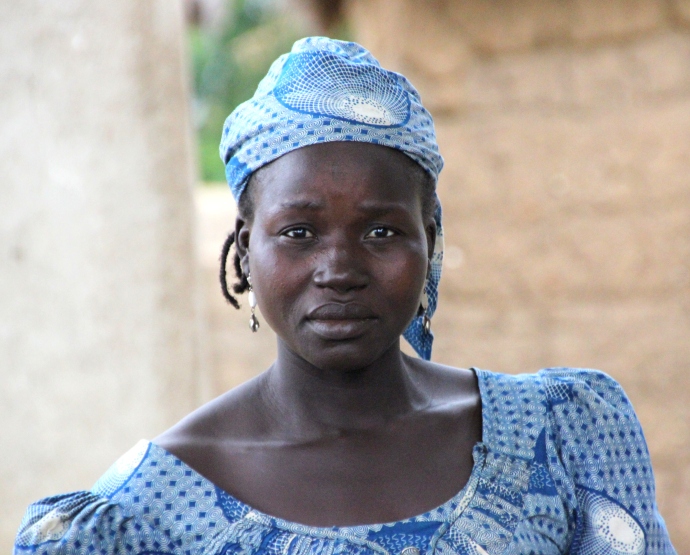
No mother should ever have to see her children go hungry.

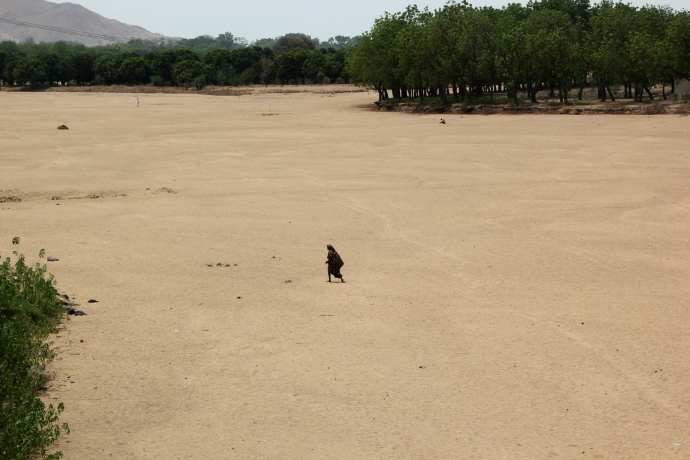







A bittersweet post, Betty. I can’t imagine the lives of these people, and it makes me appreciate every single thing I take for granted in my own life. Thank goodness for Heifer and for you sharing stories about the organization’s important work. As always, your photos are stunning.
THANKS, AA — I have been loving hearing from you AND reading your blog lately, too — and yes, it’s such a wake up call to appreciate how
much abundance we have lavished upon us! And I am so glad you liked the photos, too. The Cameroonians are so photogenic, I can’t miss!!
Thanks so much for this, Betty. I really felt this one, and it sounds like you did too. Safe travels and warm wishes!
Thanks so much Julianne .. I surely did feel it. Glad you did too.
Your entry made me feel both hopeful and anxious for these people all in the same breath. Small changes like the fireplaces and the carts are wonders, but this leapt out at me: “women do 90% of the farming and 70% of the livestock care”—where are the men???
The men are either working on cash crops or with big livestock, like cows, or most probably, doing something/anything to earn money
in the cities, or as day laborers, or far away where they can get work. The men are not laze-abouts, they’re just doing what they
can to earn money, not subsistence farm.
After a crazy week at work, this post was so grounding and the reminder I needed that my life is truly blessed. The colors of their clothing are gorgeous, their faces stunningly beautiful, and the potential in those kids’ eyes — truly priceless. Each and every one of them could change the world, and I hope they get the opportunity to do so. Thank you!
That’s so beautifully put, Liz — every one of those mothers wants the best for her children, and it is just really heartbreaking to
realize that our children will have every privilege and some of these children will have almost none. I believe we have a responsibility
to help as we are able… but you are so generous, I know you already do!
Your stories are wonderful; you are like National Geographic magazine with a personal touch.
Thanks, Ronnie .. I feel like Outsider magazine with an insider’s connection! xoxoxob
Oh, it’s so sad to think of anyone being hungry, especially children. I had no idea a reddish hair tint would indicate malnutrition. But, gosh, what gorgeous people. Great post, Betty.
Hugs,
Kathy
Thanks, Kathy — and I know you’ve seen your fill of poverty in your travels with Sara. Yes, the reddish hair is a sign of malnutrition as is the extended belly which indicates either worms or the much more extreme kwashik… disease.
Such a dichotomy in the photos – the women look sad, their eyes deep with worry but the children look happy and optimistic. I guess that’s the way it should be.
Does Heifer work in conjunction with the Gates Foundation either their Health Initiative or their Women in Agriculture Program? If no, might be worth pursuing.
Hi EOSR! Heifer is just completing a big project with the Gates Foundation in East Africa on a Dairy Cooperative project that was very large and aimed at getting farmers to aggregate their milk for commercial sale .. and I believe that was very successful. I haven’t heard about the Women in Agriculture program by Gates but I will ask Pierre Ferrari, CEO of Heifer, about it.
I found the women hauntingly beautiful – and the children unforgettably darling, but as this is ground zero in climate change, it’s hard to feel hopeful about what is ahead for them… THANKS for your comment!
Hi Betty,
Its hard to imagine poverty like this. This is a country in Africa so I can understand that they can only afford to eat meat once a month, but don’t understand why fruit is a once a week treat. What happened to the banana and papaya trees?
Love the photos especially of the kids.
Rosie — It is hard to imagine poverty like this — BUT the USA just came out as Number 2 with 23.1% of OUR children living in poverty , behind only Romania .. where I am right now. And there really is NO excuse for that, unlike in Cameroon. BUT I digress — bananas and papayas grow in the lush, humid south where there is rain, not in the North. Almost no trees grow in the north — it’s kind of uncanny. And the people have no resources to buy anything – in fact, they have to sell everything just to survive, even their meat. That was the saddest part to me — in tomorrow’s story, you’ll see what I mean … xoxoox b
Africa…
You said a mouthful there, dude…
yeah… 😀
You continue to inspire me every Monday morning. It has been incredible seeing the world through your eyes. Thank you for reminding us what the world is really like. We are very fortunate to have popped out of peep holes located in the USA.
I love that you are still reading, Steve – and it’s really my biggest dream (and privilege) to be able to see these things and meet these people & share their stories…. We all need to realize how connected we are, i think! xooxx b
beautiful and heartbreaking
Reblogged this on Gplusb's Blog.
Thanks so much for the reblog … and yes, it is heartbreaking to see hungry people (especially children) particularly when the environmental circumstances are working so radically against them. I loved the Far North of Cameroon so much … and I’m hoping and praying that somehow they will survive this climate change!
Great pictures of such beautiful people in a heartbreaking situation.
JM – aren’t they beautiful?? Yes, I did find the situation heartbreaking, too … but they are so resilient and courageous, I”m just hoping they can hold on until somebody (that would be us!!) finds a way to make their environment livable again!